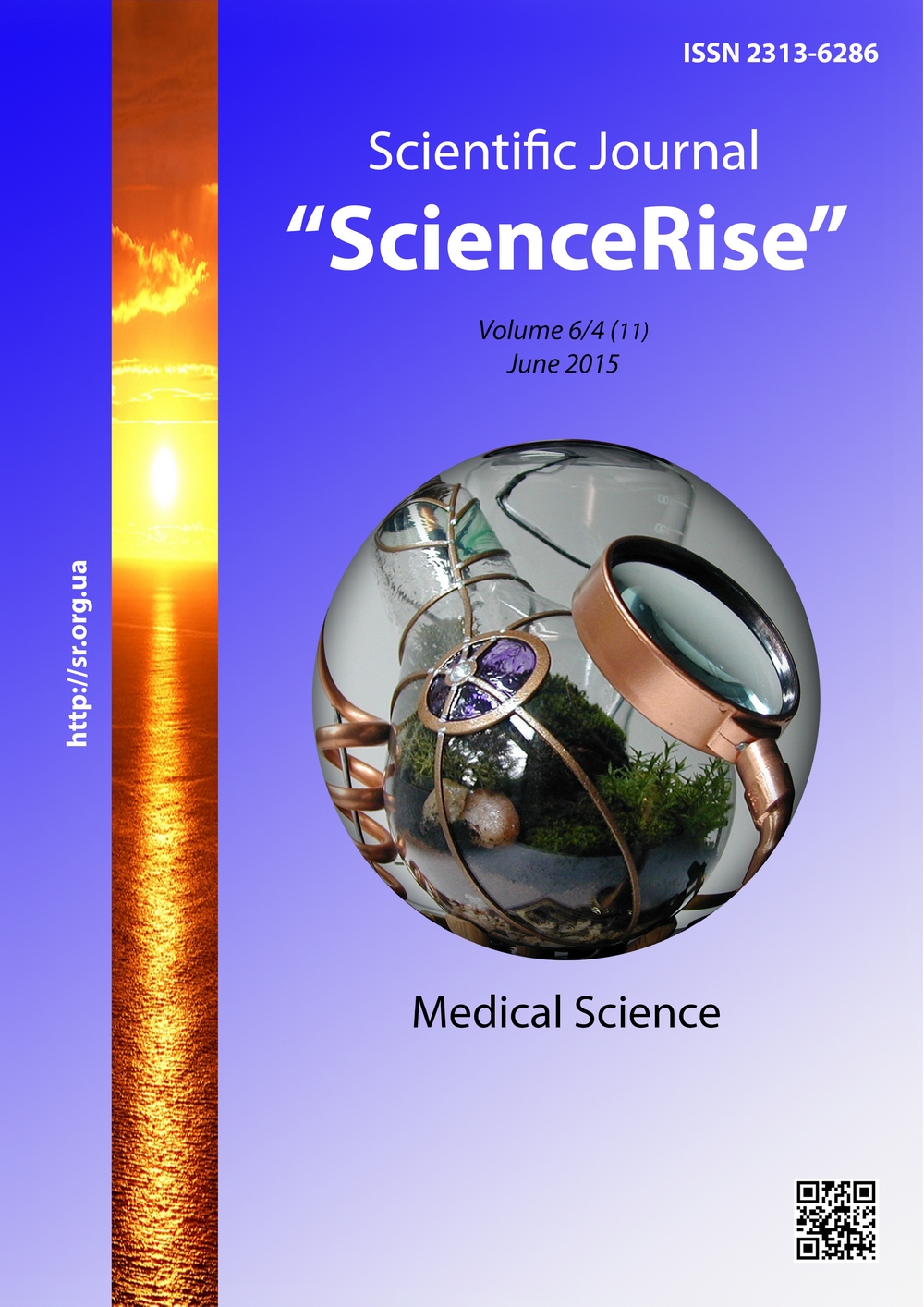Peculiarities of vernier monocular and binocular visual acuity in the retinal orthogonal meridians in patients with hypermetropic astigmatism
DOI:
https://doi.org/10.15587/2313-8416.2015.45310Keywords:
astigmatism, visual acuity, vernier visual acuity, meridional amblyopiaAbstract
It was carried out an examination of meridional vernier visual acuity in 100 patients 7-25 years old with a simple and compound hypermetropic astigmatism and refractive ambyiopia. An astigmatic component of refraction was in range 0,5- 2,5 dptr. Visual acuity on the sighting eyes after correction was 0,9- 1,0, on eyes with amblyopia 0,4 - 0,85 relative units.
Methods. Visual acuity was defined by the Landolt rings of Sivtsev table. Vernier visual acuity was defined in seconds of arc from 5 km, using special computer program.
Result. It was demonstrated that in patients with the simple hypertropic astigmatism diagnosis of meridional amblyopia can be specified by the comparison of data of monocular and binocular vernier visual acuity in orthogonal meridians of retinas.
Conclusions. An effect of the rise of meridional binocular visual acuity in one of meridians and its absence in another one allows define selective meridional disturbances of the visual acuity
References
Dobson, V., Miller, J. M., Harvey, E. M., Mohan, K. M. et al. (2003). Amblyopia in astigmatic preschool children. Vision Research., 43, 1081–1090. doi: 10.1016/s0042-6989(03)00014-2
Vit, V. V. (2003). Structure of the visual system of man. Odesa: Astroprint, 664.
Hubel, D. H. (1988). Eye, brain, and vision. New York: Scientific American Library, 239.
Bondarko, V. M., Semenov, L. A. (2012). Acuity and Hyperacuity for Pupils of 11–17 Years Old. Physiology of man, 38 (3), 56–61.
Polat, U., Bonneh, Y., Ma-Naim, T., Belkin, M., Sagi, D. (2005). Spatial interactions in amblyopia: Effects of stimulus parameters and amblyopia type. Vision Research, 45 (11), 1471–1479. doi: 10.1016/j.visres.2004.12.014
Wang, Y.-Z., Morale, S. E., Cousins, R., Birch, E. E. (2009). Course of Development of Global Hyperacuity Over Lifespan. Optometry and Vision Science, 86 (6), 695–700. doi: 10.1097/opx.0b013e3181a7b0ff
Harvey, E. M., Dobson, V., Miller, J. M., Clifford-Donaldson, C. E. (2007). Amblyopia in astigmatic children: Patterns of deficits. Vision Research, 47 (3), 315–326. doi: 10.1016/j.visres.2006.11.008
Harvey, E. M. (2009). Development and Treatment of Astigmatism-Related Amblyopia. Optometry and Vision Science, 86 (6), 634–639. doi: 10.1097/opx.0b013e3181a6165f
Freeman, R. D., Mitchell, D. E., Millodot, M. (1972). A Neural Effect of Partial Visual Deprivation in Humans. Science, 175 (4028), 1384–1386. doi: 10.1126/science.175.4028.1384
Gwiazda, J., Bauer, J., Thorn, F., Held, R. (1986). Meridional amblyopia does result from astigmatism in early childhood. Clin. Vis Sci., 1, 145–152.
Mitchell, D. E., Freeman, R. D., Millodot, M., Haegerstrom, G. (1973). Meridional amblyopia: Evidence for modification of the human visual system by early visual experience. Vision Research, 13 (3), 535–558. doi: 10.1016/0042-6989(73)90023-0
Blakemore, C., Cooper, G. F. (1970). Development of the Brain depends on the Visual Environment. Nature, 228 (5270), 477–478. doi: 10.1038/228477a0
Merzenich, M. (2000). Seeing in the sound zone. Nature, 404, 620–621.
Sharma, J., Angelucci, A., Sur, M. (2000). Induction of visual orientation modules in auditory cortex. Nature, 404 (6780), 841–847. doi: 10.1038/35009043
Downloads
Published
Issue
Section
License
Copyright (c) 2015 Владимир Александрович Коломиец, Максим Юрьевич Бандура, Наталия Владимировна Коломиец

This work is licensed under a Creative Commons Attribution 4.0 International License.
Our journal abides by the Creative Commons CC BY copyright rights and permissions for open access journals.
Authors, who are published in this journal, agree to the following conditions:
1. The authors reserve the right to authorship of the work and pass the first publication right of this work to the journal under the terms of a Creative Commons CC BY, which allows others to freely distribute the published research with the obligatory reference to the authors of the original work and the first publication of the work in this journal.
2. The authors have the right to conclude separate supplement agreements that relate to non-exclusive work distribution in the form in which it has been published by the journal (for example, to upload the work to the online storage of the journal or publish it as part of a monograph), provided that the reference to the first publication of the work in this journal is included.

